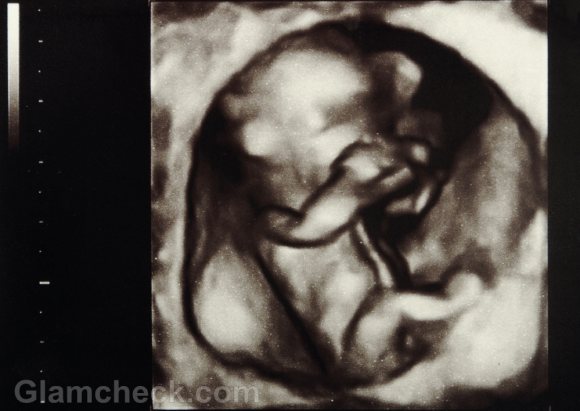Women today have several abortion methods to choose from. There are both surgical and non-surgical procedures available. There are also herbal abortion methods that were used before medical abortion methods were created. But herbal abortion methods are highly unsafe and not the best option when there are so many medical abortion methods available. Therefore, herbal abortion methods will not be discussed here. This is a brief overview of the safer medical abortion methods that you can consider, and the factors that you should take into consideration before making a decision. Of course, this should not replace a detailed consultation with your doctor. But we can demystify some of the most widely used abortion methods to make things a little simpler for you.
Surgical Abortion Methods
 Abortion methods can be segregated into two main categories – surgical abortion methods and non-surgical abortion methods. Let’s take a look at the former first.
Abortion methods can be segregated into two main categories – surgical abortion methods and non-surgical abortion methods. Let’s take a look at the former first.
As the name suggests, surgical abortion methods involve some kind of surgical procedure to terminate the pregnancy. It may or may not involve being put under general anesthesia, and there are a few risks associated with all of them, as would be the case of any surgical procedure no matter how routine. Following are the surgical abortion methods that may be considered in the pregnancy first trimester and in the first few weeks of the pregnancy second trimester.
Vacuum Aspiration
Vacuum Aspiration or endometrial aspiration is the most popular of abortion methods if the mother is in the first 12 weeks of pregnancy. It is considered much safer than other abortion methods since it is quick, does not depend on electricity or fancy equipment, and does not involve the use of general anesthesia. Vacuum aspiration is a simple procedure by which the contents of the uterus are sucked out by a small suction tube that is inserted through the cervix.
Dilation and Curettage
Dilation and Curettage, also known as D&C, involves scraping the walls of the uterus with a sharp surgical instrument to remove the implanted embryo. This method of abortion may be used in the first few weeks of the pregnancy second trimester.
Dilation and Evacuation (D&E)
Dilation and Evacuation (D&E) or vacuum suction is one of the abortion methods employed after the ninth week of pregnancy and up to 20 weeks. In the pregnancy second trimester, the baby is too large to make the above abortion methods a viable option. For D&E, the cervix needs to be a little dilated. A sharp instrument is inserted into the uterus and the growing foetus is cut into as many tiny pieces as possible so they can be evacuated from the uterus.
Salt Abortion
Salt Abortion is another of the abortion methods that may be used in the pregnancy second trimester. It cannot be used earlier since there needs to be a fair amount of amniotic fluid for this abortion method to work. A long needle through the abdomen injects a saline solution into the amniotic fluid. The saline solution is extremely poisonous for the baby and causes burning of the skin, dehydration, damage to the organs, and finally, death. Within 24 hours of administering the saline solution, labor will occur and the dead foetus will be expelled. This is not the most reliable of abortion methods though as several cases have been reported of the babies being delivered alive. This can be extremely traumatizing for the mother.
Prostaglandin Chemical Abortion
Prostaglandin Chemical Abortion also involves an injection, but into the uterus this time. The prostaglandin causes premature labor and the baby is expelled. But this is neither one of the safer nor the most pleasant abortion methods. Many women report that the uterine contractions are extremely intense, bordering on violent.
Surgical Abortion Methods after The Pregnancy Second Trimester
 In the final weeks of the pregnancy second trimester and in the pregnancy third trimester, the surgical abortion methods discussed this far will not be effective. Be warned though that since the baby is quite big at this point, the abortion methods applied to terminate the pregnancy will undoubtedly have to be a little more extreme. The following surgical abortion methods are considered if an abortion is required this late in the pregnancy.
In the final weeks of the pregnancy second trimester and in the pregnancy third trimester, the surgical abortion methods discussed this far will not be effective. Be warned though that since the baby is quite big at this point, the abortion methods applied to terminate the pregnancy will undoubtedly have to be a little more extreme. The following surgical abortion methods are considered if an abortion is required this late in the pregnancy.
Partial Birth Abortion
Partial Birth Abortion or dilation and extraction is the preferred surgical abortion method in the later stages of pregnancy since by then the foetus is too large and the muscles and tissue too strong for the other abortion methods to work. Here’s a brief explanation of the procedure. The cervix needs to be dilated first. When the cervix is sufficiently dilated, hormones that induce contractions are introduced in the system. But the goal is not delivery. Without getting too technical, once the baby’s head is out of the vagina surgical scissors are inserted at the base of its skull creating a hole large enough to fit a suction tube. The brain of the baby is literally vacuumed out and the skull collapses.
Abdominal hysterotomy
Abdominal hysterotomy is one of the abortion methods that is not used much anymore because of the higher level of risks involved. But it is sometimes the only option in the later stages of pregnancy. Abdominal hysterotomy is, in a way, like a caesarean section since it involves opening the uterus through a cut in the lower abdomen and extracting the contents. This method of abortion may sometimes be employed in the later weeks of the pregnancy second trimester as well. The baby is obviously still alive at this point and so will have to be killed or simply left to die.
Surgical abortion methods in the later stages of pregnancy always carry a higher risk because of the nature of the procedures. It is also a rule of thumb though that the further along you are in your pregnancy, the more risky the very idea of an abortion.
Non-surgical Abortion Methods
 Also known as medical abortion methods or chemical abortion methods, non-surgical abortion methods are basically about taking oral medication that will induce an abortion by putting a stop to a couple of the reproductive system’s natural processes. Let’s take a brief look at what non-surgical/medical/chemical abortion methods entail.
Also known as medical abortion methods or chemical abortion methods, non-surgical abortion methods are basically about taking oral medication that will induce an abortion by putting a stop to a couple of the reproductive system’s natural processes. Let’s take a brief look at what non-surgical/medical/chemical abortion methods entail.
Medical abortion occurs after taking the abortion pill, which is not one but actually two pills that are needed to complete the abortion fully. The first pill prescribed is known as mifepristone, which will usually be given to the pregnant woman under a doctor’s or nurse’s supervision. Mifepristone stops the production of progesterone – a hormone that is crucial to the continued development of the foetus. Once it does so, the embryo breaks away from the lining of the uterine wall and may be ejected from the body through bleeding. But this is only the first part.
The second part of this abortion method involves taking a second pill – misoprostol – about 24 to 72 hours after having taken mifepristone. The time between doses will depend on your particular case so speak to your doctor about it. You do not need to visit a clinic to take the pill. You can take it at home, but a call to your doctor beforehand is recommended so that he or she is on the alert. Misoprostol will complete the abortion by causing uterine contractions that allow the uterine lining (depending on how far along you are in the pregnancy) to break away from the uterine wall and be ejected within about 8 hours, thus completing the abortion. This whole process can take anywhere from 3 days to 2 weeks.
Non-surgical abortion methods are not 100% reliable. They work about 96% of the time. Medical abortion methods are only recommended in the pregnancy first trimester, and that too only in the first 8 to maximum 9 weeks. After that, only surgical abortion methods are viable for a successful abortion.
Which of These Abortion Methods is Right for Me?
Abortion is a very safe procedure today. But that does not mean that you should take it lightly. Choosing one of these abortion methods is not something you should decide on simply after reading a few articles online. It is crucial that you see a qualified doctor or health-care professional who knows your medical history, what medication you are on, your age, how many weeks pregnant you are, and what you are more inclined to. Your budget also comes into it, but that should be the least of your worries when deciding on abortion methods.
For example, you may want to go with non-surgical abortion methods but that may not be possible if you are too far along in your pregnancy. Or one of the surgical abortion methods may not be right for you in particular because of an existing medical condition that you may be suffering from.
Deciding which of these abortion methods is right for you is a sensitive issue and should be discussed in detail with your doctor. However, here are a few points which will allow you to create a framework that will help you better decide which of these abortion methods suits you best.
How far along in your pregnancy are you? If you are in your pregnancy first trimester, you can opt for non-surgical/medical/chemical abortion methods or surgical abortion methods. Non-surgical abortion methods are best at this point since they are the easiest and cheapest method for abortions in early pregnancy. Plus, a surgical abortion is still a taxing procedure for your body (even though it will not show) and if surgery can be avoided, then nothing like it.
However, non-surgical abortion methods may not be ideal for you if you suffer from certain health problems such as adrenal failure, anemia, or issues with blood clotting, or have cancer. These are just a few examples of medical cases that are not viable for medical abortion methods. Speak to your doctor about any health conditions you are suffering from to determine if you can go ahead with medical abortion methods.
You also have to consider how far away you live from the closest medical facility in case something goes wrong, and whether you have the time to stay home for non-surgical abortion methods. Medical abortion methods are not recommended for women who are working outside their homes since it is best to be relaxed when undergoing the abortion. If you are not able to take time off work, then perhaps one of the surgical abortion methods would be more suitable for you.
Image: Shutterstock
